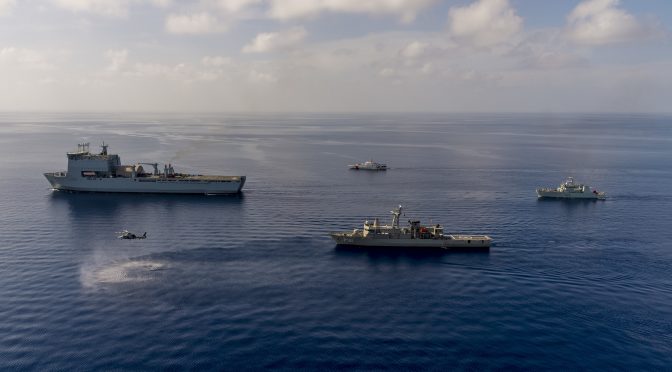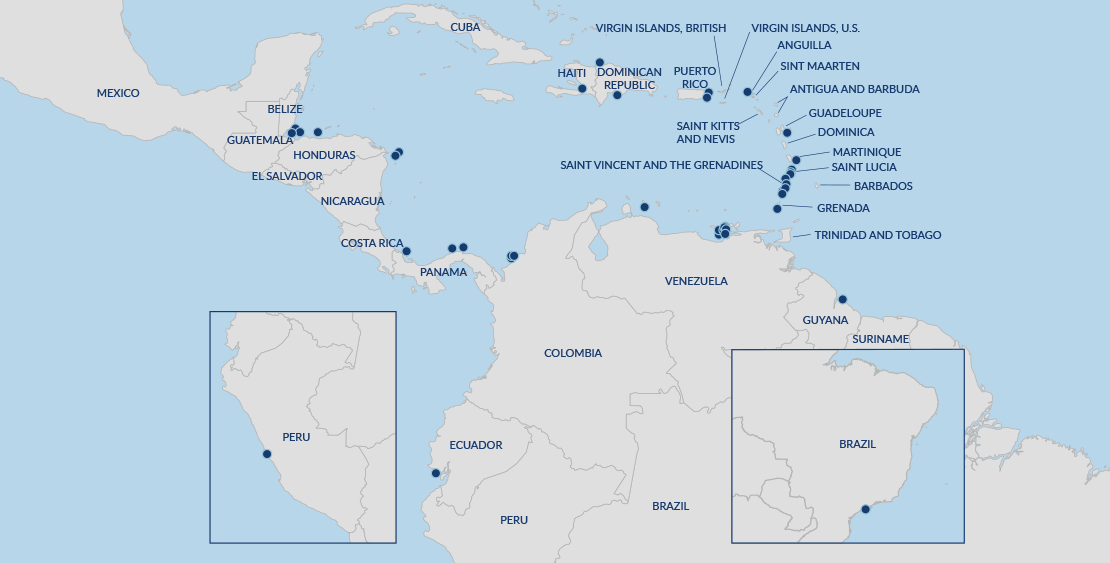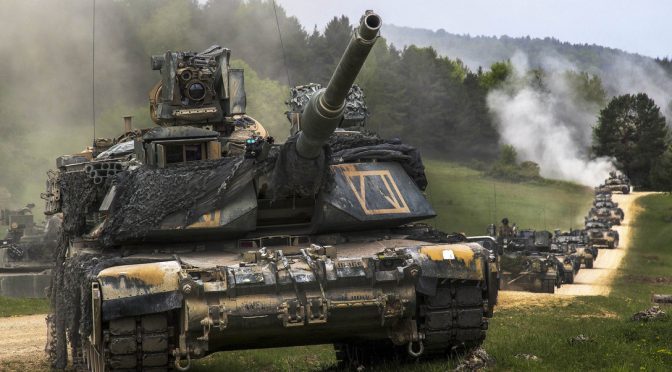Read Part One of this series here.
By Colonel John D. Rosenberger
It Is How Commanders Become Masters of the Art and Science of Battle Command
The OPFOR regimental commander (alternately the 1st and 2nd Squadron commanders), the regimental staff, and motorized rifle battalion commanders set conditions for effective employment of the regimental combined-arms team. Their ability to do it is a function of their mastery of the art of battle command, as we now call it. Indeed, the regiment can fight no better than the regimental commander’s ability to see the terrain, see the enemy, see himself, and see the battle unfold in his mind. Granted, the ability to inspire and motivate soldiers, the ability to impose his will, tenacity, compassion, patience, and so forth are also important. But these are elements of effective leadership, not tactical competence.
Commanders and battle staff in the OPFOR quickly develop the ability to see the terrain and its effects on combat operations. By that, I mean the map talks to them. They see more than the Go and No Go terrain, key terrain, or decisive terrain. They see and envision the effects of terrain on the enemy’s ability and their own ability to move, generate momentum, disperse, mass, observe, deploy, shoot, or protect the force. They can envision, at a glance, where the enemy would be most vulnerable to the diverse capabilities of their force or where terrain provides them an opportunity to seize the initiative or control the tempo of the battle. Equally important, they can perceive where terrain would restrict or constrain the employment of their combined-arms team.
On a higher plane of thinking, they can see how to use the terrain to create conditions where the enemy would be vulnerable to the fires they can bring to bear. In other words, they can see, within their battlespace, where the enemy would be most vulnerable to destruction by close air support, delayed by artillery-delivered minefields, vulnerable to antitank fires, blocked, turned, disrupted or fixed by obstacles, disrupted by jamming, or where terrain would provide them a relative firepower advantage in the close fight. Armed with these skills, they can shape the battlefield to set conditions for success – the adept use of terrain to control the tempo of battle, create favorable force ratios, create vulnerabilities, optimize the effects of their own capabilities, control the enemy’s direction of movement, and protect the force.
Additionally, OPFOR commanders develop a masterful ability to see the enemy. They can envision with remarkable clarity how the enemy commander would employ his combined-arms team. They can envision the sequential and simultaneous actions and combat systems the enemy commander would use to shape his battlefield for success. They can perceive the critical tasks the enemy commander has to accomplish, how he will probably employ his combined-arms team to accomplish the tasks, or how the enemy commander will seize and retain the initiative. As the battle unfolds in their minds, they can immediately recognize the high-value and high-payoff targets and when those targets would be most vulnerable to attack by the capabilities of the OPFOR combined-arms team. They can easily visualize the rate of enemy movement, the organization and depth of his formations, and the location of high-payoff targets. Even more important, they can see which combat functions or capabilities have to be attacked to disrupt the synchronization of the enemy’s combined-arms team – the first step to victory under combat conditions.
Commanders can also see themselves. By that, I mean they are expert in the capabilities and limitations of every system in their combined-arms team. They have mastered the science of warfighting. Moreover, they know how and when these capabilities can be used most effectively against the enemy. For example, they know the type and volume of artillery munitions required to achieve the effects they want, the range of various artillery munitions, and every gun’s sustained rate of fire. Consequently, they know how many batteries are required, where they should be placed relative to the target, and the time required to shoot the munitions necessary to produce the desired effects. They also know the time required to shift a battalion of artillery from one target to the next, the actual occupation times of their artillery battalions, and an artillery battalion’s rate of movement relative to the terrain. Consequently, they can create effective sequential and simultaneous engagements throughout the depths of the battlefield and decide when to move to protect the force and when to move to sustain fire support through the depth of the operation.
The OPFOR commanders also know the capabilities and limitations of their collection and jamming teams, comprised of soldiers with an unparalleled ability to protect the force and change the outcome of battle. Consequently, they know how and where to establish a baseline to obtain accurate direction-finding, radio intercept, and effective jamming. More important, they master the ability to focus and use these capabilities to answer their priority intelligence requirements and to jam the enemy when he is most vulnerable to its effects.
Commanders are also expert in the employment of obstacles. They have a keen sense of what their engineers can realistically accomplish. For example, they know how long it takes their engineer company, given their manning and level of training, to install an effective blocking or turning obstacle, the quantity of material required, the man-hours required, the transportation involved, the number of fighting positions they can realistically dig in the time available, and so on. Armed with this mastery of the science of warfighting, they can easily envision how to effectively employ these engineer capabilities to shape the battlefield, protect the force, and establish conditions for success in the deep and close fights.
At the same time, commanders develop and possess the ability to see themselves from the enemy commander’s perspective. They can almost read their opponent’s mind. They have the cognitive ability to recognize where they are strong and where they are weak from the enemy commander’s point of view. Moreover, they are adept at perceiving their own vulnerabilities and recognize their exposure. Coupled with real-time human intelligence (HUMINT), this ability lifts the curtain of uncertainty off the battlefield, exposes the enemy’s most likely course of action, and illuminates weakness and vulnerabilities in their opponent’s fighting posture. Finally, OPFOR commanders learn to think in terms of force protection. By that, I mean they learn to fight the battle in their minds and immediately discern the active and passive measures necessary to protect the force. They do not think simply in terms of safety, radio listening silence, raising the air defense warning status, repositioning of reserves, and so forth. They take passive and active measures to protect their forces from observation by air and ground reconnaissance systems, electronic location, thermal detection systems, the effects of enemy indirect and direct fire systems, special munitions, fratricide, and the effects of weather, disease, and injury.
When you are up against combined-arms commanders like these, it doesn’t get any tougher. The point is that it takes these kinds of commanders and staffs to bring a unit to its full combat potential. They are simply indispensable. The problem is that conditions required to develop combined-arms commanders and staffs of this caliber do not exist within the remainder of our Army. These kinds of commanders and staffs are developed through constant study and application of the art and science of warfighting, terrain walks, situational training exercises, repetitive opportunities to fight and learn from their mistakes in the field, not in simulations, and most important of all, repetitive combat-like experiences which develop battlefield intuition – an immediate feel for the battlefield situation and what must be done to win. Unfortunately, these conditions don’t exist for soldiers and leaders anywhere else in the Army today. This is an insightful lesson the OPFOR provides as we ponder how to maintain landpower dominance in the Army of the 21st century. But again, this is only a partial answer to the questions. Here’s another reason.
It Is How the OPFOR Plans Combat Operations
The truth be known, the OPFOR wins its battles before it fights them. Very few battles ever unfold in a way substantially different from what the OPFOR team envisioned or planned to accomplish. Moreover, the incomparable ability of the OPFOR to get every dog in the fight at the right time at the right place is legendary. The reason? The OPFOR has learned how to set conditions for synchronization of the combined-arms team in the planning process, and learned how to preserve it during execution of battle as the situation evolves. The conditions for victory are set by their planning process. It’s safe to say that no leader in the OPFOR would agree with the old adage that plans change at the first contact with the enemy, or that planning is a rather useless endeavor and performance in execution is really what matters.
The regimental orders process is a disciplined battle drill, characterized by strict time management. It follows the same military decision-making process outlined in FM 101-5 Staff Organization and Operations. Complete METT-T (mission/enemy/terrain/troops/time available) analysis is the foundation, and no shortcuts are taken. The regimental staff, working as a team, prepares detailed enemy situational templates which graphically depict the enemy’s most likely course of action, array, and presentation of forces on the battlefield, and probable locations of high-payoff targets, such as fire direction radars, artillery units, command posts, aircraft rearming and refueling points, or reserves. Once this analysis is presented, the regimental commander conducts his own commander’s estimate of the situation, visualizes the battle unfolding in his mind, sees it unfold on the terrain, then develops several courses of action for employment of his combined-arms team that will ensure defeat of his opponent.
From this analysis and visualization, the commander develops his commander’s intent, and he spends a lot of time ensuring he gets this right. He issues his intent by first stating the task and purpose the regiment must achieve. Next, he describes in clear doctrinal language the few critical tasks which must be accomplished sequentially, some simultaneously, in order to win. He wraps this up by describing the end state he wants the force to achieve – what success looks like when the fight is over.
Next, he issues planning guidance to his staff – guidance which clearly describes how he wants the combined-arms team employed, his critical information requirements by phase, how he wants to shape the battlefield for success, the means he wants to use to control the tempo of battle, and the effects he expects at critical times and locations in the fight. After just a couple of months in the saddle, a regimental commander can do this in minutes. It becomes intuitive. As a minimum, he will direct his staff to deliberately wargame three courses of action, sometimes four.
With these things in hand, the chief of staff assembles the staff and conducts a detailed, deliberate wargame of each course of action – the most important step in the planning process. Why? The deliberate wargaming process sets conditions for employment and synchronization of the combined-arms team to produce the effects and outcome the commander expects. Moreover, the wargaming process produces the few critical products necessary to employ and control the force: the operations order, with specific task and purpose assigned to each unit; the reconnaissance and surveillance plan; a synchronization matrix for each course of action (the score for the orchestra); movement and positioning plans for the artillery groups; and operational graphics. Interestingly, the targeting process is embedded in the wargame, so as another outcome, the staff produces the plan for simultaneous and sequential attack of enemy high-payoff targets through the depths of the battlefield.
A distinguishing feature of this planning process is the control imposed by the plan, and the synchronization which stems from it. At the regimental level, the plan tells every member of the combined-arms team what to do, when to do it, and where do it – but never how. As the OPFOR has learned, synchronization cannot be achieved any other way. Synergy of the combined-arms team cannot be created in other way.
The process used by the OPFOR is much like writing a score for an orchestra. In an orchestra, if the trumpets, the flutes, and the violins play whatever notes they want, when they want, you get nothing but noise. The musical score (synchronization matrix) specifies which instruments will play what notes, when in relation to other instruments, and where in the sequence of time. If done properly, you get Beethoven’s 5th Symphony. The same goes for military operations. Consider motorized rifle battalions, artillery groups, close air support, and jamming systems as instruments of war. Firm control is required at regimental level to ensure all capabilities are employed at the right time and place for maximum effect. On the other hand, down at the maneuver company level, much less control is imposed and initiative is prized, once the unit makes direct fire contact. In short, this planning and synchronization process is how the OPFOR achieves its full combat potential during the execution of battle. But there are other significant factors that differ from most units they oppose.
Take the operations order: Only one written operations order is published for the regimental combined-arms team which addresses multiple courses of action. Tasks to subordinate units are always expressed in the form of task and purpose. Only one set of graphics is produced and every leader in the regiment, from top to bottom, uses this one set of graphics. Subordinate units do not develop their own, unique graphics. In other words, every member of the combined-arms team is looking at the same sheet of music. Subordinate commanders issue oral operations orders, based on a clear understanding of what they have to do, when they have to do it, and where they have to do it.
The graphics are a wonder of simplicity. Only a few graphic control measures are used: report lines, lines of maneuver, artillery/rocket fire boxes and targets, smoke lines, firing lines, and air battle positions. That’s it. Fire boxes, or firing lines, are used as battlefield reference points to adjust direction of maneuver, identify current locations, or shoot artillery. This technique of controlling forces is the source of the impressive flexibility the regiment is able to achieve in every battle. It’s the principal reason the regiment is able to quickly change direction and shift the main effort, sustain common situational awareness throughout its battlespace, and preclude fratricide. In sum, the regiment’s planning process lies at the heart of its ability to achieve its full combat potential. Nonetheless, it is only a partial answer to the questions at hand. There is another good reason.
Colonel Rosenberger is currently serving as Commander, 11th Armored Cavalry Regiment, Fort Irwin, CA.
The above was originally published by the Association of the U.S. Army’s Institute for Land Warfare Studies as a part of its Landpower Essay Series. Read it in its original form here.
Featured Image: Soldiers use the M777 howitzer to fire high explosive munitions in support of Operation Enduring Freedom in 2008.





